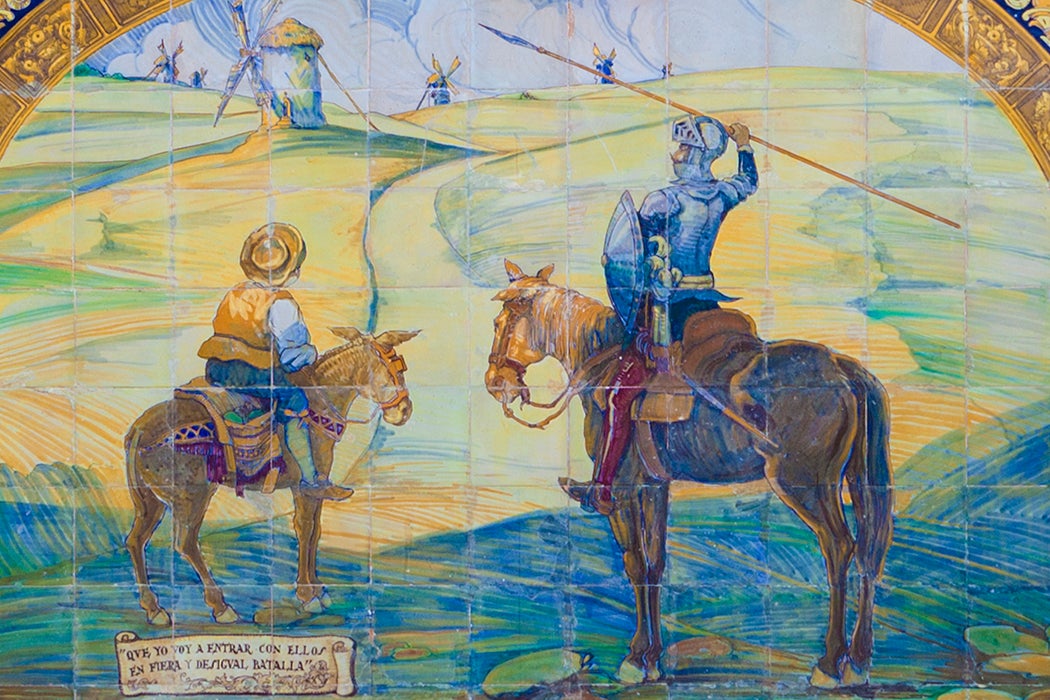We are living in the era of the soft reboot, those continuations of television and movie franchises for a new generation of viewers. Between shows like Fuller House and Twin Peaks: The Return, and movies like Star Wars: The Force Awakens and Jurassic World (as well as their forthcoming sequels), no once-profitable media property is so dead that it can’t be exhumed and reanimated with a bolt of studio capital.
The culture industry has long repackaged content from the past for the present, but the modern soft reboot is unique for exhibiting a high degree of self-consciousness, winking to media consumers attuned to the monetization of their nostalgia. In these works, self-reference is intended as a salve to ease fans’ potential distaste by applauding their intelligence and celebrating their love of a fictional universe. Nowhere is this more evident than in The Force Awakens, whose protagonist, the orphaned scavenger Rey, functions as a surrogate for the series’ most devout fans. Like them, she also worships the monuments and myths of the original Star Wars trilogy, even owning a crude action figure.
Although this kind of maneuver has now become a part of the DNA of our popular culture, the self-referencing soft reboot is actually as old as mass media itself. In 1605, an aging Spanish author published a fictional narrative about an aging Spanish hidalgo pathologically obsessed with fictional narratives. To say Miguel de Cervantes’s Don Quixote was an unlikely success would be a massive understatement. Indeed, the printer who finally published it had so little faith in the book that he secured a copyright valid exclusively within the small province of Castile. Only later did he try to extend his license “to cover other parts of the Spanish peninsula, as unauthorized editions began to appear from Valencia to Lisbon.” The capstone of Don Quixote’s cultural rise was the 1614 publication of a spurious sequel by the pseudonymous author Alonso Fernández de Avellaneda. This event almost certainly redirected the course of Cervantes’s own sequel.
Part Two of Don Quixote, which Cervantes published in 1615, a decade after Part One, is—to risk an anachronism—a seventeenth-century version of the soft reboot. In this, Quixote remains the same deluded knight-errant he was in Part One, but the world he inhabits is one in which both Don Quixote Part One and Avellaneda’s noncanonical volume also exist. Whereas Part One of Don Quixote chronicled the tragicomic adventures of a man “enchanted by a dream of resurrecting the courtly ethos in a world which has long ago forsaken it,” Part Two unfolds a tragedy of the disenchantment that comes from living as a fictional character in a real world. Throughout the novel, Quixote encounters people who, having read of his exploits, manipulate him for their own amusement. No longer just a naïve reader, Quixote is also the one who is read.
Weekly Digest
The novel’s most memorable episode is its most self-referential. After arriving in Barcelona, Quixote enters a printing house where he sees copies of Avellaneda’s book being printed, becoming a witness to the production and distribution of a counterfeit account of his own life. For Carlos Fuentes, this episode represents the triumph of the democratic possibilities of the novel, the moment at which we are “suddenly plunged into a truly new world of readers, of readings available to all and not only to a small circle of power.” But it is also the moment at which Quixote confronts the commodification of his being, a thing that, thanks to technological advances, can now be sold, forged, and abused.
In the end, Cervantes’s sequel to his most famous work is a melancholy reflection of an artistic creation being given over to an anonymous mob of readers capable of both sympathy and violence. Today’s modern reboots, which live or die on their capacity to enchant, tend to take a more positive view of their audiences.







